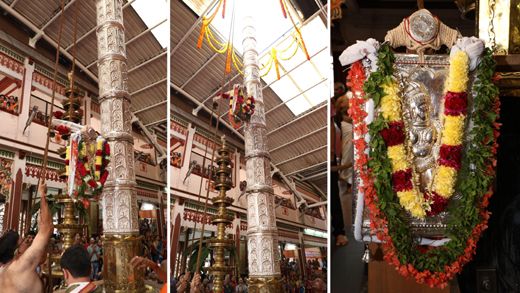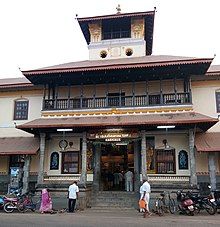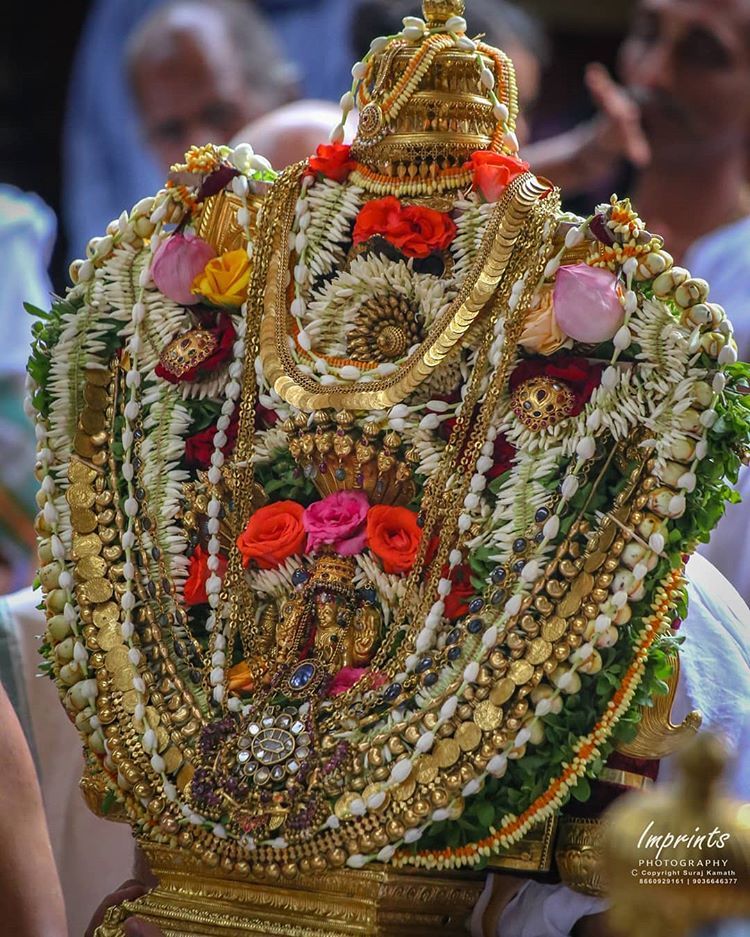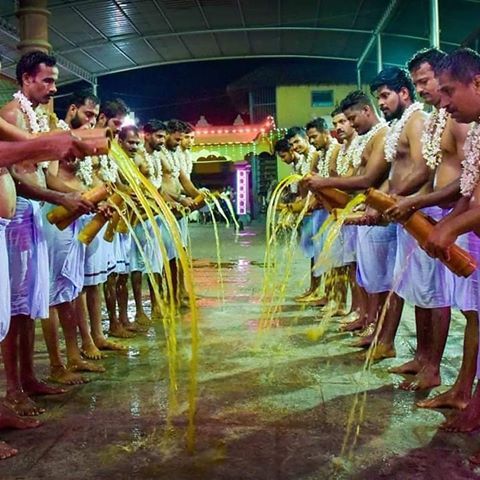Karkala Theru.
May 29, 2019 • 147 views
Following up yesterday’s article, today’s article is about one of the most famous temples in Udupi – Sri Venkataramana Temple, also famously known as “Padutirupati”. The name literally means west to Tirupati.(Padu means west).
The history of the installation of this temple is quite interesting. The first GSB families that escaped from Goa after Portuguese invaded Goa, came to Karkala in search of shelter. They then asked the Jain King to provide land to make a temple for Lord Venkataramana. After installation of the temple, dacoits came to Karkala. In fear, people ran with the gold and idols and put it in Mulki but later when they tried to retrieve it, they couldn’t find the idol. They were depressed, that’s when the Lord came in their dreams and asked them to get back to Karkala and promised them that he will come to Karkala with a saint from Tirupati. The next day, an old man came with an idol and following the dream of the Lord, the Saint gave the idol of Tirupati to the people with a condition that the idol needs to be brought to Tirupati once a year. This way, the temple was built on 25th April, 1537.
Karkala Theru is an annual festival that happens during April – May in the Honour of Lord Srinivasa. It lasts for 6 days with different rituals on each day.
Day 1.

The day starts with Vishnu Sahasranamam chanted by the priests followed by Dhwajarohana. Dhwajarohana includes a silver flag that has the Lord’s face on it that is hoisted on the Dhwajasthambha. This marks the start of Theru. This is followed by Suthubali which includes the procession of the idol around the temple.This starts in the evening. The day ends with dinner provided to the whole town after giving offerings to the Lord.
Day 2.

Day 2 consists of the same thing except Dhwajarohana. There is Suthubali, Samradhane (the feast to town people) and evening prayers.
Day 3.

The day has Suthubali after which the Lord is taken to every house near the temple and placed in front of the Tulasi plant. This is known as Katte poja. The Lord is brought back to the Temple. The day ends with Samradhane again. These dinners are sponsored by some or the other family every year.
Day 4.

This day includes Suthubali again. Suthubali happens all the 5 days in the evening. This is followed by Sanmana javan, which translates to honouring the guests. The feast of this day includes special dishes. Every married woman is given Turmeric and Sindoor. Warm sandalwood paste is put on men and kids. While feasting, the people are also fanned with a huge hand fan. This is followed by Mriga bete. Mriga bete translates to deer hunting. People go to Ramasamudra and a man (belonging to the family that has been doing this ritual for years ) holds the bow and arrow and hits a wick.(earlier it was supposed to be a deer but now they just hit a wick). After this, before bringing the idol back to the temple, it is placed in Padmavati Temple for sometime. Later after reaching the temple, small chariot (ratha) is pulled for procession with the lord’s idol in it. This day is called “Sanu Theru” or small Theru.
Day 5.

This is the most critical day of Theru, hence called the “Hodu” or big theru. After Suthubali, the idol is brought out and is again revolved around the Brahma ratha (the main ratha). The idol is put on the chariot and flowers of gold, silver and bronze are thrown to the crowd gathered near the ratha. The procession starts from the temple and continues only for a few steps. This is followed by the Samradhane. Stalls of food, toys and accessories are put across the streets. Everything from earrings to ice cream is sold in this fair. At midnight, the ratha is pulled by all the people (mostly men) till Gopura and is brought back after Pooja.
Day 6.

The most fun of all the 6 days is the last day where people play Okulu. Before this, the Silver flag is brought down from the Dhwajastambha marking the end of Theru. Okulu is the same as Holi. People throw turmeric water on each other and also bathe the idol in it. After playing, everyone goes to Ramasamudra and takes a bath in the water there.
